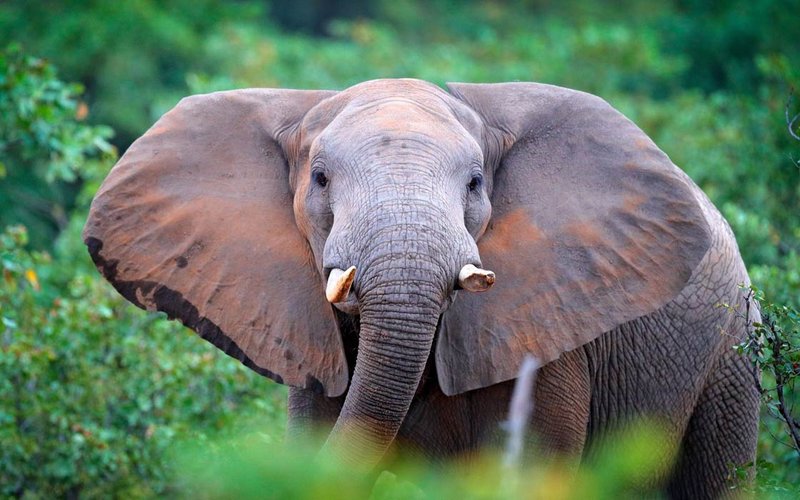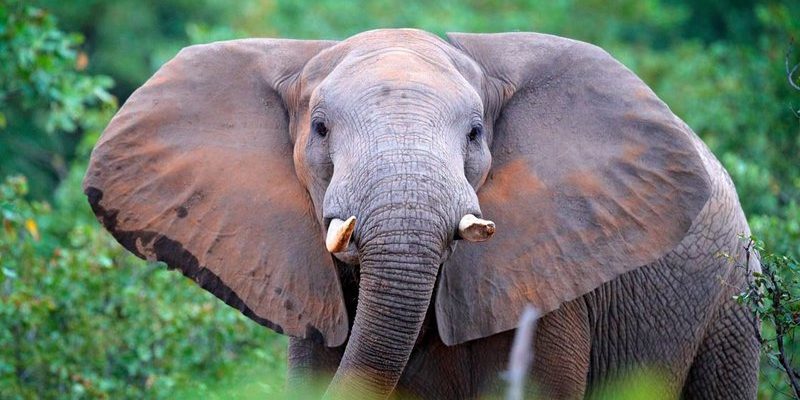
Let’s imagine sitting down for coffee, talking about how wildlife often lives in the shadows of our awareness. The African forest elephant, with its unique features and behaviors, is one of those animals. It’s easy to get lost in the myths swirling around them, but don’t worry! I’m here to clear things up and dive into the truth behind this magnificent creature.
The Size Difference: Smaller Doesn’t Mean Less Majestic
You might be surprised to learn that the African forest elephant is significantly smaller than its savanna counterpart. While a typical African savanna elephant can weigh up to 12,000 pounds and stand about 13 feet tall, the forest elephant usually weighs around 8,800 pounds and only reaches about 10 feet.
But don’t let their size fool you! These elephants are just as majestic. Their smaller stature allows them to navigate the dense forest, and their even smaller, rounded ears help to keep them cool in the humid climate. Here’s the thing: being smaller doesn’t take away from their beauty or importance in the ecosystem. They create trails through the forest and help disperse seeds, promoting the growth of diverse plant species.
Their Role as Ecosystem Engineers
When you think about it, elephants are like nature’s gardeners. The African forest elephant plays a key role in maintaining the health of its habitat. By feeding on trees and plants, they help sustain the balance of the forest ecosystem.
For example:
- Seed Dispersal: When they munch on fruits, they swallow seeds that later get expelled, often at quite a distance. This helps plant new trees and ensures biodiversity.
- Habitat Creation: By knocking down trees and trampling underbrush, they create openings that allow sunlight to reach the forest floor, encouraging the growth of young plants.
In this way, the African forest elephant isn’t just another animal; it’s an essential piece of the ecological puzzle.
Misconception: They’re Just Like Savanna Elephants
Many people think all elephants are the same. It’s a common misconception that the African and Asian elephants, or between the savanna and forest elephants, share the same behaviors and characteristics. However, the African forest elephant has unique traits that set it apart.
For instance, their tusks are straighter and thinner, adapted to digging for food in the forest underbrush. They also have more complicated social structures. While savanna elephants often roam in large herds, forest elephants tend to form smaller groups, which can change frequently.
Understanding these differences is crucial, especially regarding conservation efforts. Protecting the African forest elephant means recognizing its unique habitat and social needs.
Social Structures: Complex Relationships
One of the most captivating aspects of the African forest elephant is its social interactions. These elephants are quite social, but their groups are smaller and more fluid than those of savanna elephants.
You might be wondering how this works. Forest elephants often interact with other groups, and their social ties can be quite complicated:
- Bonding: They form close relationships with family members, particularly female relatives, which helps nurture the young and protect each other.
- Communication: These elephants have various vocalizations and body language that convey different meanings. They can communicate over long distances through low-frequency rumbles, which is fascinating!
These social structures help forest elephants thrive in their lush yet challenging environment.
Myth: African Forest Elephants Are Aggressive
There’s a stereotype that elephants are aggressive creatures. While it’s true that they can defend themselves fiercely when threatened, African forest elephants are generally not aggressive. Like many animals, their behavior is more about survival than hostility.
In fact, these elephants are often shy. They prefer to avoid human encounters and retreat into the depths of the forest when approached. The real danger comes when humans invade their habitat, destroying their homes.
Understanding this myth is essential for conservation. By respecting their space and working to protect their habitat, we can help prevent aggressive encounters on both sides.
Importance of Conservation Efforts
Conservation efforts are more critical than ever for the African forest elephant, especially given the threats they face from habitat loss and poaching. Here’s the thing: every little action counts, whether it’s supporting wildlife organizations or spreading awareness.
Some notable conservation efforts include:
- Protected Areas: Establishing national parks and reserves helps provide safe habitats for forest elephants to roam freely.
- Anti-Poaching Initiatives: Increasing patrols in vulnerable areas helps protect elephants from poaching, which is driven primarily by the ivory trade.
By participating in these efforts, we can contribute to a brighter future for these magnificent creatures.
Ending the Myths: Embracing the Truth
By debunking the myths surrounding the African forest elephant, we can appreciate these animals better. They aren’t just smaller versions of savanna elephants; they are distinctive creatures with unique roles in their ecosystems. Understanding their behaviors, social structures, and the challenges they face brings us closer to respecting and protecting them.
Ultimately, the African forest elephant represents the beauty and complexity of nature. Let’s cherish these gentle giants and work towards a future where they can thrive in the wild. After all, every elephant plays a part in the intricate web of life, and the forest elephant deserves our attention and love.
In a world full of misconceptions, let’s strive to spread knowledge and pave the way for better conservation efforts for the African forest elephant. Together, we can make a difference and ensure these majestic animals continue to roam the lush forests of Africa for generations to come.

